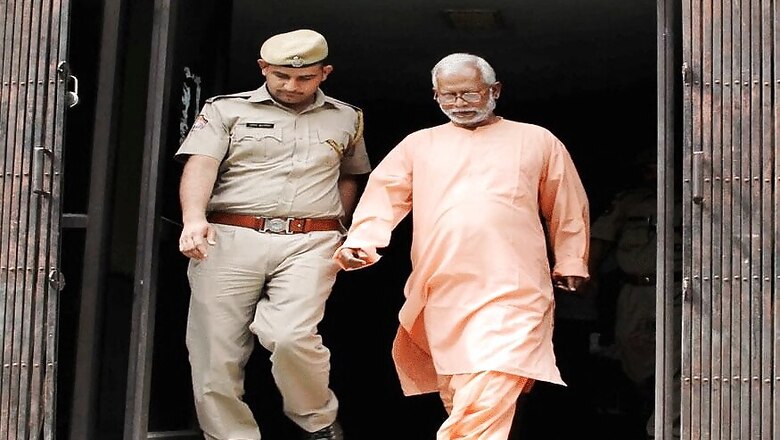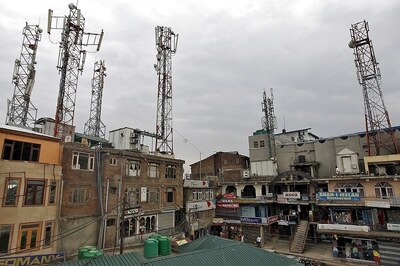
views
New Delhi: The NIA court delivering its verdict in the 2007 Samjhauta blast case, in which 68 people lost their lives, remarked on the ‘malaise’ set in investigating agencies that identify terror attacks by the perpetrator’s religion.
"Terrorism has no religion because no religion in the world preaches violence," the judge of the special NIA court, Jagdeep Singh, noted.
“It is generally noticed that a malaise has set in the investigating agencies which coin various terms like Muslim terrorism, Hindu fundamentalism etc or brand an act of criminal(s) as act(s) of particular religion, caste or community.”
He added that a "criminal element, belonging to a particular religion, community or caste" cannot be projected as representative of a particular religion, community or caste.
The judge further added that "branding the entire community, caste or religion in the name of such criminal element(s) would be totally unjustified and it would be in the best interests of humankind to nip such tenancies in the bud lest we should be heading towards intense civil war or caught in a whirlpool of fratricide."
NIA was also castigated severely for not providing enough evidence to support the case it had built in the Samjhauta blast case.
Samples - ‘Investigating agency, very strangely, has not even bothered’, ‘again valuable piece of evidence remained untapped’, ‘again, very strangely, it is nowhere made out from evidence produced on record by the NIA’, ‘A few bits here and a few bits there on which prosecution relies cannot be held to be adequate’, ‘NIA has miserably failed to prove the charges framed against the accused’.
At the end the judge of the special NIA court, Jagdeep Singh, noted “with deep pain and anguish as a dastardly act of violence remained unpunished for want of credible and admissible evidence. There are gaping holes in the prosecution evidence and an act of terrorism has remained unsolved.”
What was the Samjhauta Express blast?
It was on February 18 in 2007, that multiple IED blasts was carried out in the Samjhauta train – which runs between Delhi and Lahore – at Panipat in Haryana.
A total of 68 people including 43 Pakistan citizens, 10 Indian citizens and 15 unidentified people were killed in the blast. 64 out of the total killed were civil passengers and 4 were Railways officials. 12 people including 10 Pakistanis and two Indians were also injured in the terrorist attack. A number of train coaches were also burnt in the resultant fire.
The accused and their alleged motive
NIA in its chargesheet had alleged that Swami Aseemanand was very upset with ‘the Islamic Jihad/terrorist attacks on Hindu temples like Akshardham (Gujarat), Raghunath Mandir (Jammu) and Sankat Mochan Mandir (Varanasi)’.
The agency claimed that Aseemanand “used to express his feelings of anger during discussion with Sunil Joshi, Pragya Singh and Bharat Bhai.’
It added that all the accused discussed the issue of Islamic Jehad/terrorist attacks on Hindu establishments and over a period of time and ‘developed vengeance not only against the misguided Jehadi/terrorists but against the whole Muslim community as such.
Swami Asimanand, with an intention to give a befitting reply to the perceived persecution of Hindus by the members of the Muslim community, propounded a theory “bomb ka badla bomb”.’
The investigating agency alleged that the blast was carried out with an aim to threat the “unity, integrity, security and sovereignty” of India.
The verdict
The judge Jagdeep Singh in his order has on multiple occasions noted in his order how NIA failed to establish the guilt of the accused with supporting evidence.
For instance, NIA had alleged that the accused had carried out tests of the bombs they were planning to use in Samjhauta Express in jungles in Madhya Pradesh. One of the accused Kamal Chauhan also disclosed to the NIA that he can identify the places at Indore and Bagli forest area on 27.02.2012 where preparation of bomb & demonstration of blast of bomb was given.
‘But strangely no sample of sand/earth was collected at that time and samples of sand/earth are stated to have been collected on 26.12.2012 i.e. after about 10 months’ after he first pointed out the spot.
‘Therefore, collection of sand/earth sample from a place which has already come to the notice of investigating agency almost 10 months ago, is nothing but apparently seems to be procured evidence, more-so when forest area is an open place accessible to all and is an open area which is subjected to all kinds of wear and tear of weather.’
There was not enough evidence that, the court noted, even the samples collected after nearly a year were duly sealed, thus raising questions about their veracity.
NIA had also alleged that the accused had done a recce of railway stations in Delhi before planting bombs on the train and stayed at the railway station dormitory. But the court noted that two evidences – CCTV footage or entries made by the accused – were not collected and verified from experts.
‘Had the CCTV footages of old Delhi Railway Station been collected by the investigating agency and put to rigorous examination, then some vital leads might have been obtained by it in order to bring the real culprits to justice,’ the judge notes.
‘Again this court has not got an opportunity to look into a vital piece of evidence because the entries in the handwriting of passengers might have been got compared with the handwritings/signatures of suspects, thereby further providing a vital clue about the involvement of real culprits,’ the judge adds.
The NIA did not even collect fingerprints from bottles filled with some liquid that were found near the blast site, the court noted.
‘However, again, very strangely, it is nowhere made out from evidence produced on record by the NIA that such report of Finger Print Expert was got matched/compared with the finger prints of the suspected persons or the accused so as to get vital clue about the use of plastic bottles in the explosions carried out in Samjhauta Express train blast and again vital piece of evidence in the shape of scientific evidence has remained untapped,’ the judge notes.
The court also notes at one place that ‘investigating agency has gone over-board to build a case even on the basis of documents which have no concern with the occurrence dated 18.02.2007.’
















Comments
0 comment